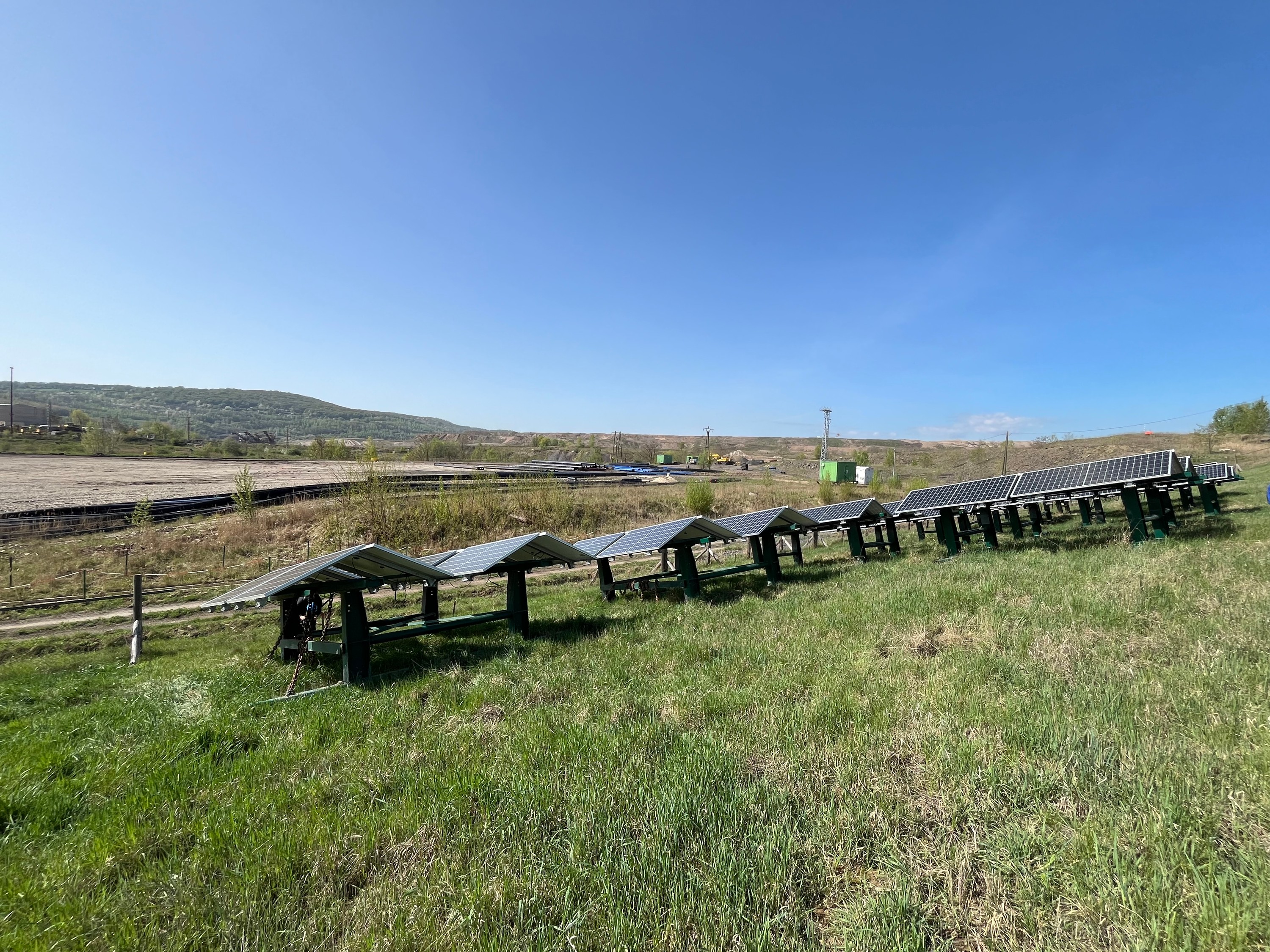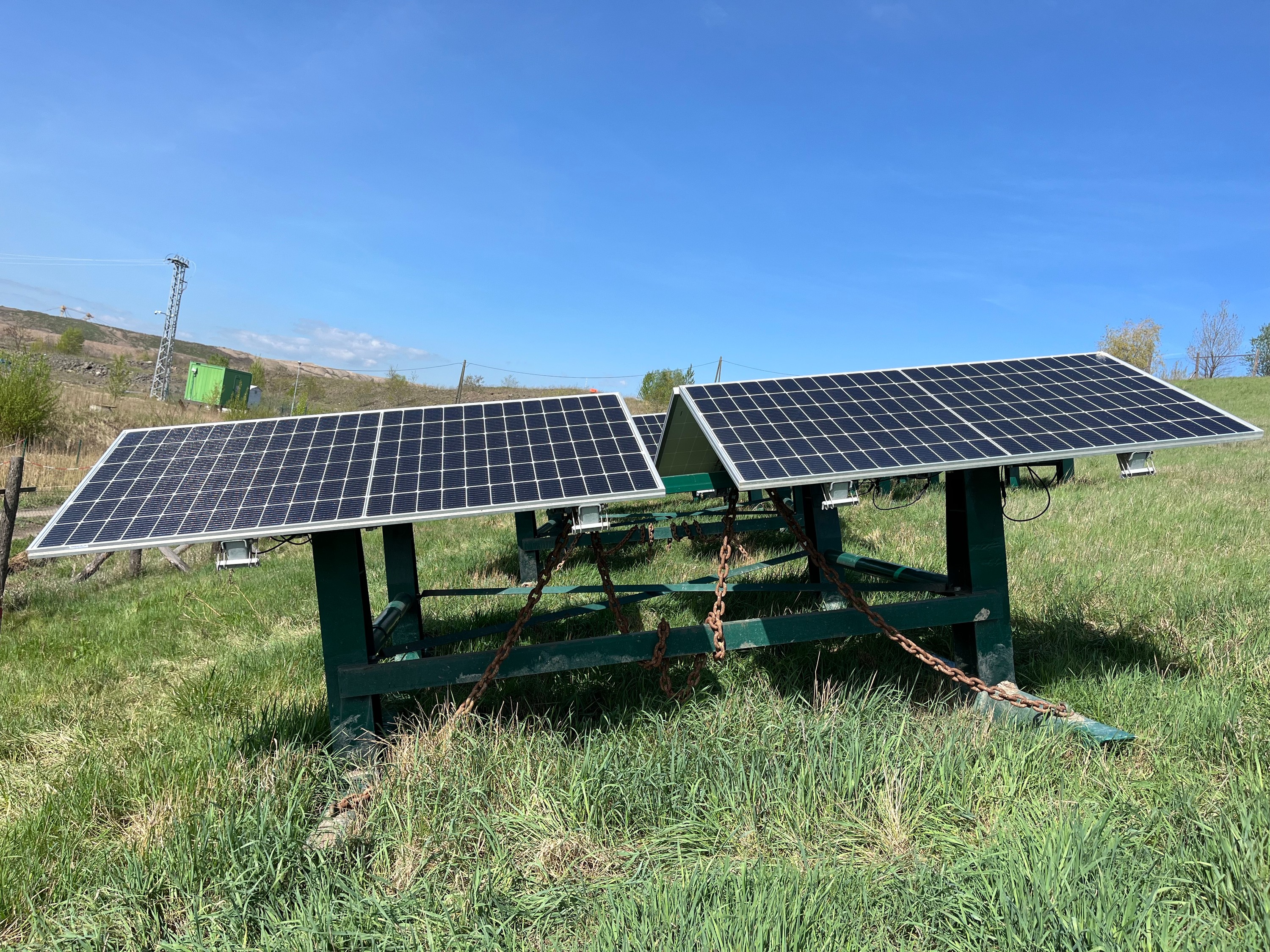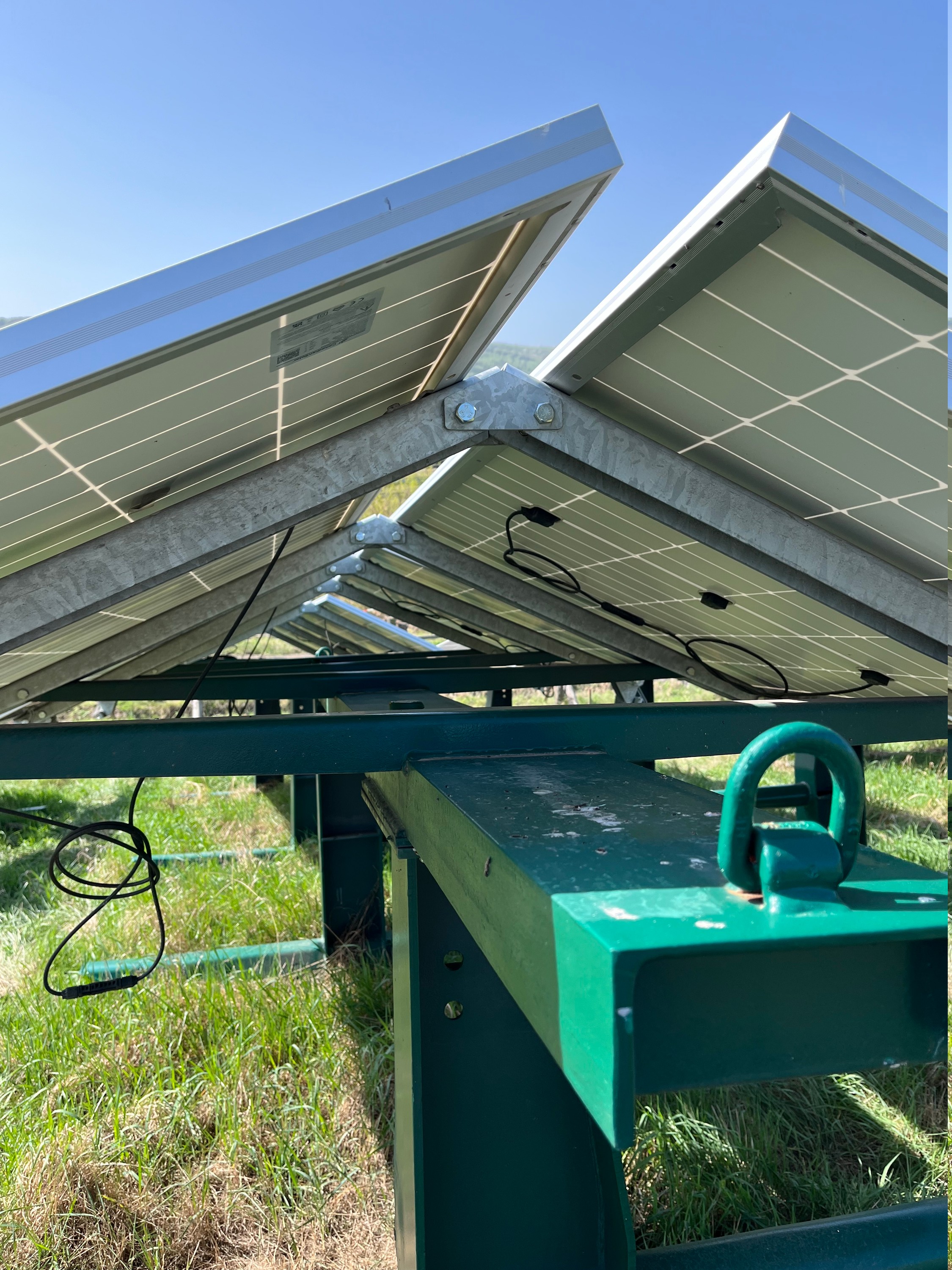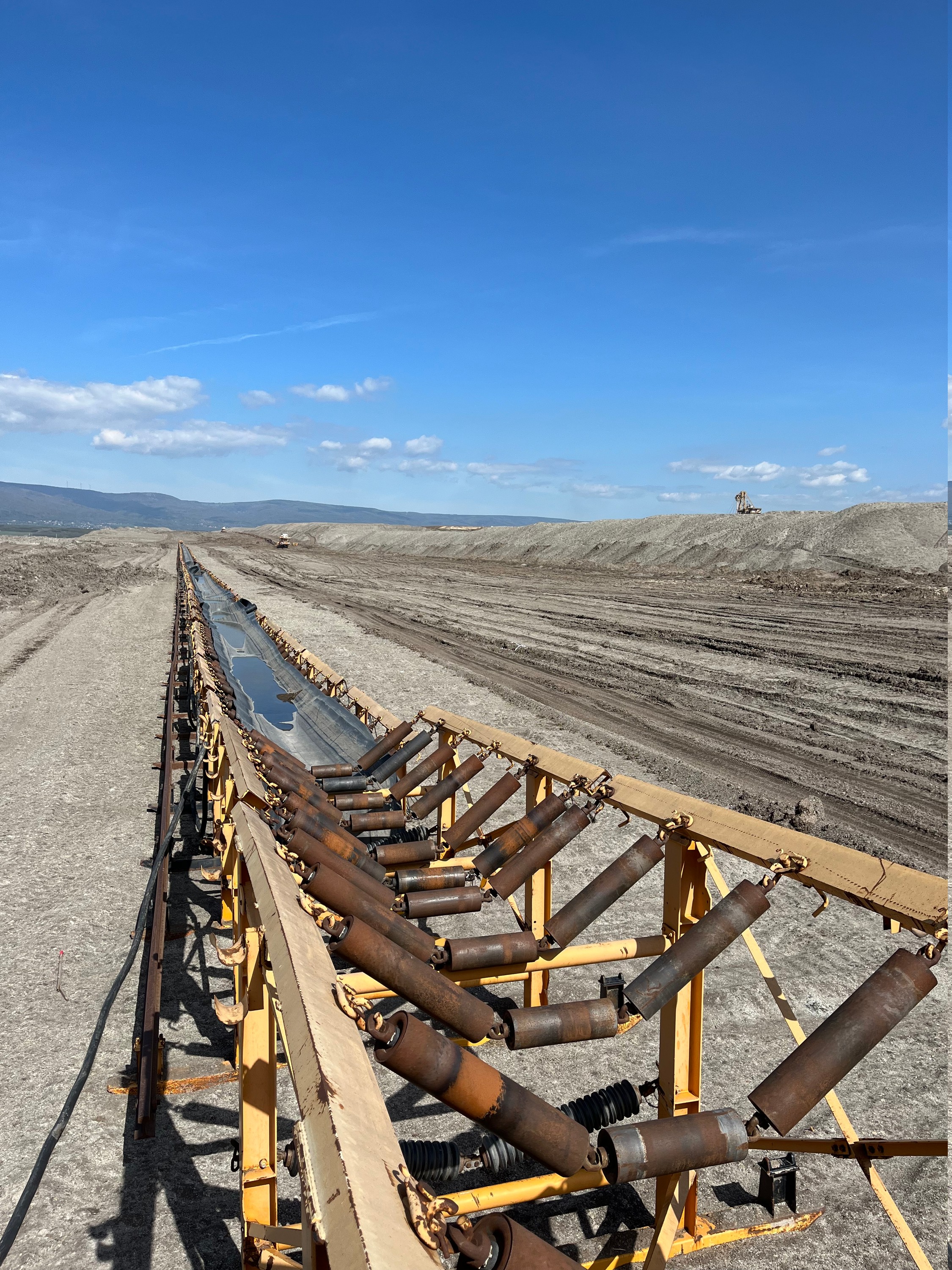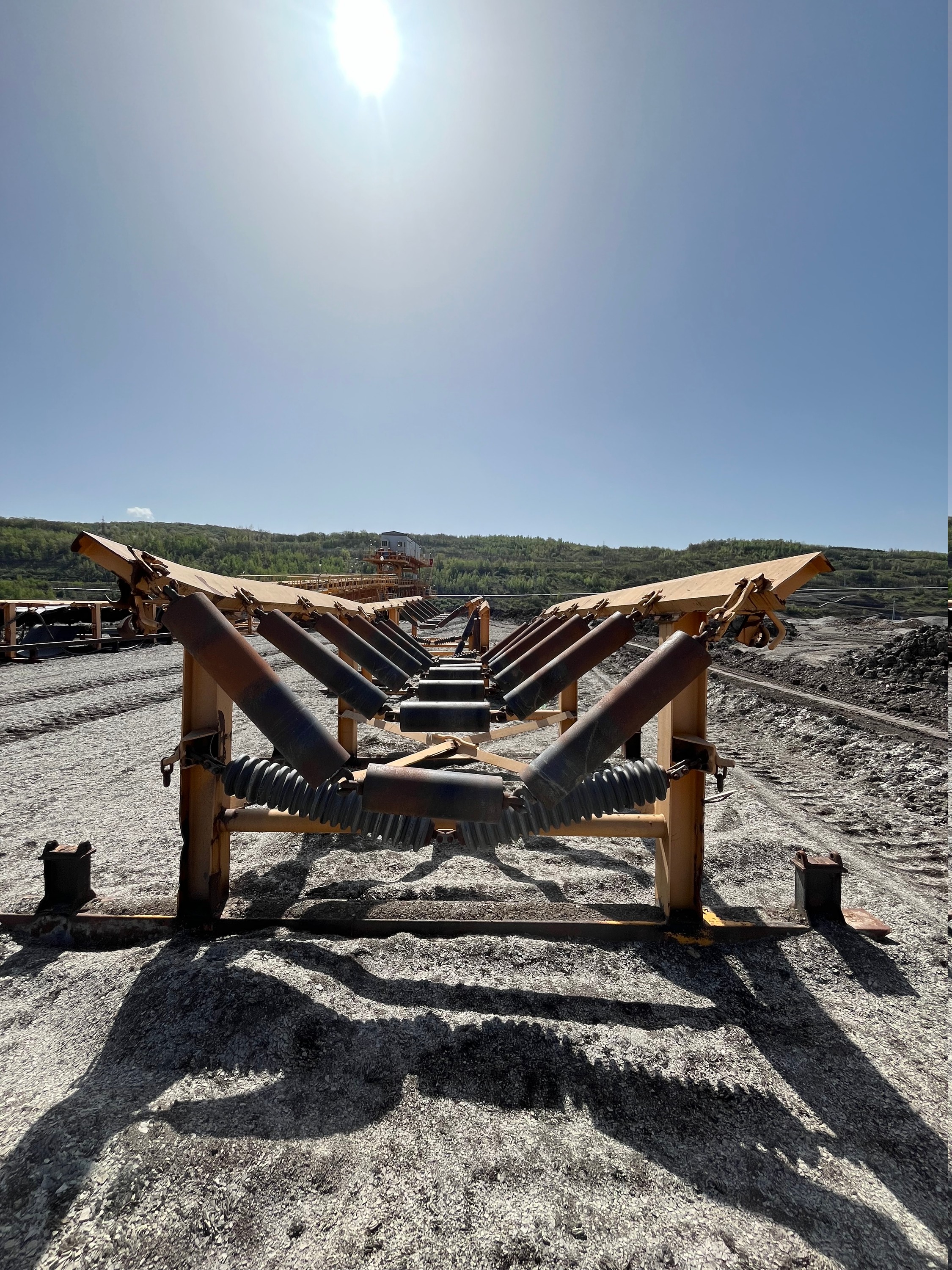ČEZ Group develops unique solution for securing photovoltaic panels in unstable subsoil
The central sections of conveyor belts in strip coal mines could serve as structures for carrying photovoltaic power plants in the future. Normally, these structures are bored into the ground; however, the common solution cannot be used in areas with unstable subsoil, such as spoil heaps, waste ponds, and other unfirm areas. Engineers from PRODECO, a company from the ČEZ Group, have been developing prototypes that are able to cope with moving soil. Moreover, retired mining equipment could get a second life and a new purpose. In pursuing its vision of Clean Energy for Tomorrow, ČEZ Group will build new photovoltaic power plants with a capacity of thousands of MWs by 2030.
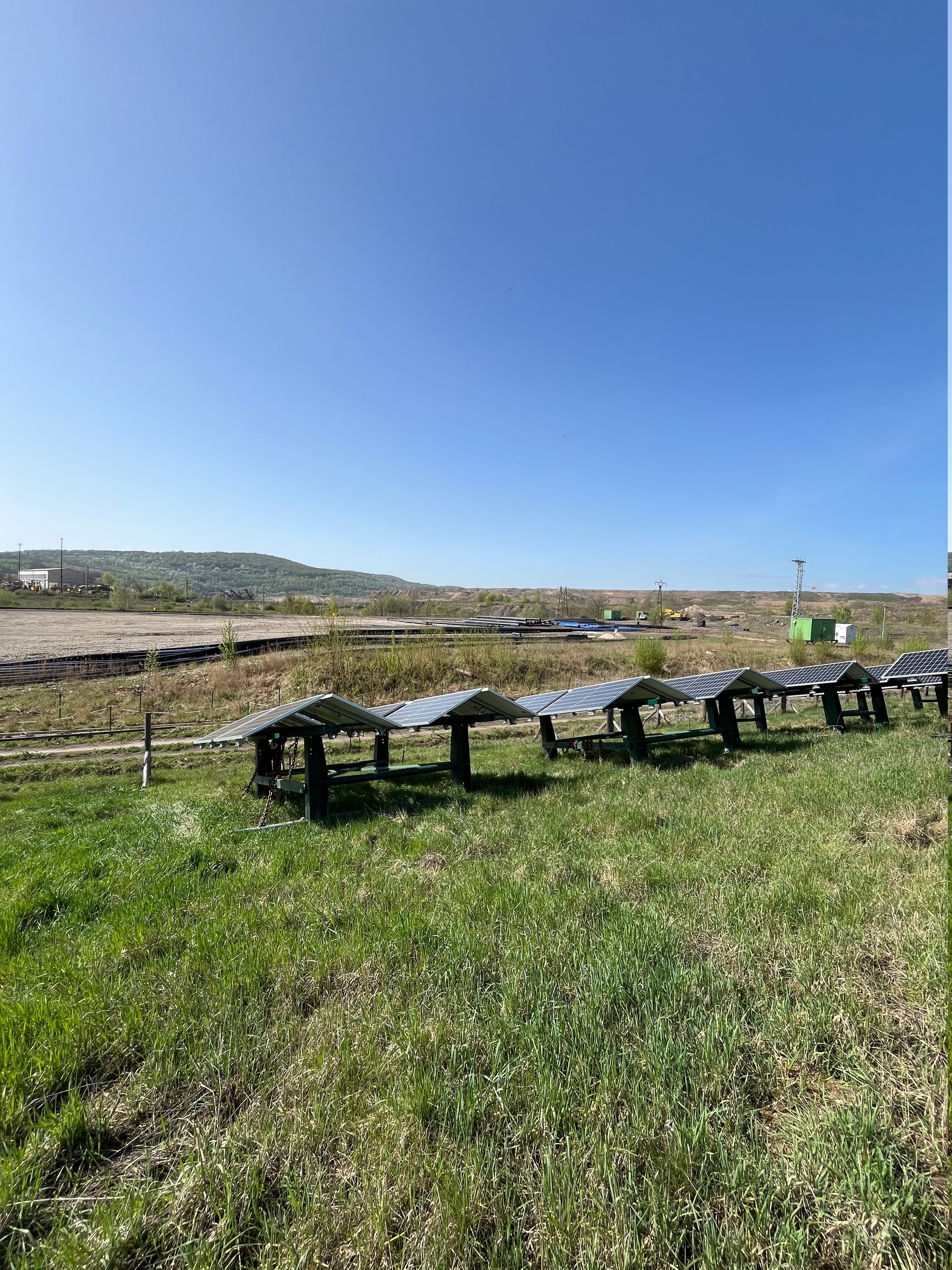
In order for the extracted soil to get from the excavators to the other side of the mine, to the spoil heap, the edges of the entire strip mine are lined with long-distance conveyor belts. As mining moves on, in the mine, so do the transport routes. In the future, as mining is phased out, the central sections of those conveyors could be given a new purpose – the steel structures with their side rail could serve as supporting structures for photovoltaic power plants.
“We place our photovoltaic plants primarily on infertile soil, in brownfields, and in areas in which industrial mining has been discontinued. Before life returns to such places, they can be useful for generating renewable energy from the sun. The soil deposited in spoil heaps is loose, it only settles gradually, and it may take decades for it to stabilise. We must adapt the technology used for building photovoltaic plants, and our goal is to behave in a sustainable manner and not to needlessly increase our carbon footprint,” says Jan Kalina, member of the Board of Directors and head of the Renewable and Conventional Energy Division.
If the panels were mounted on our standard structures, they would jam and crack. The challenge therefore was to come up with a new solution that would be both fast and come with minimal costs. A solution that offered itself was to use technologies that are already available in strip mines.
“We used the central sections of conveyor belts, which offer great advantages: they are robust, because they are designed for heavy-duty operation, and they feature side rails that are now used for transport along the plain. This makes these structures fit for any unstable subsoil or subsoil encumbered with an environmental burden, as they only stand on the surface, are extremely stable, and they offer a non-invasive method of building photovoltaic power plants,” summarises Luboš Straka, Chairman of the Board of Directors and CEO of PRODECO.
Once the extracted material settles, the structure tilts as a whole and the stress is therefore not transferred to the panels. Thousands of these modules will be available in the Bílina Mine alone, after coal mining is phased out. Several pilot structures have already been deployed on a reclaimed area in close proximity to the Bílina Mine extraction area. For all of last year, experts used it to test how photovoltaic panels cope with subsoil movement.
“The positive news is that the performance of the solar panels did not drop. For unstable subsoils, however, it will be more suitable to use technologies other than conventional silicon panels, such as thin-layer panels without silicon cells, in which the semiconductor is applied directly to the glass. The selection of the ideal technology is now the subject of further development,” adds Kalina.
In relation with its Clean Energy for Tomorrow strategy, ČEZ focuses on intensive development of renewable sources. By 2030, it plans to contribute to the transformation of the Czech energy sector to a zero-emission sector, by building renewable sources with a capacity of up to 6 GW. To that end, it has been testing new technologies and is placing renewable energy sources on, for example, water surfaces. At the Ledvice Power Plant, a green energy laboratory was set up several years ago, in which ČEZ experts test the properties and suitability of various types of panels. The first Czech floating photovoltaic power plant has been deployed in the upper reservoir of the Štěchovice pumped-storage power plant, which is unique for being placed on a water surface whose level fluctuates constantly.
Barbora Peterová, mluvčí ČEZ
- ČEZ presents investment plan for Ústí nad Labem region
- Weather in first quarter was favourable for ČEZ hydro, solar and wind power plants in the Czech Republic. Production increased by 29 percent
- CEZ Group 2023 Sustainability Report: direct GHG emissions down by 12%, investments into sustainable activities up by CZK 4.7 billion
- Dětmarovice moving away from coal. ČEZ will build new low-emission heating and power plant in location for CZK 2 bn and will ensure heat supplies for Bohumín and Orlová for next decades
